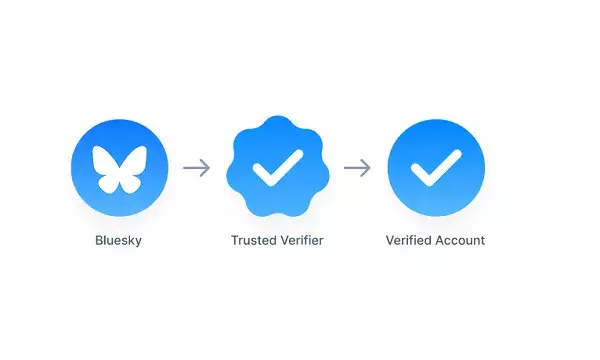In the fast-evolving landscape of social media, the challenge of establishing authenticity and authority among users has never been more pressing. Bluesky, the alternative platform co-created by Twitter’s co-founder Jack Dorsey, recently made waves with its distinctive in-app verification system. Unlike the traditional blue checkmark associated with mainstream social media platforms, Bluesky is opting for a multifaceted approach that includes unique verification ticks for both individuals and organizations. This strategy not only recognizes trusted sources but also invites organizations to act as “trusted providers” that can verify their own members. By broadening its verification scope, Bluesky could inadvertently be setting itself up for complexities that require careful navigation.
Understanding the New Verification Framework
At the core of Bluesky’s new verification initiative lies a simple yet potentially effective mechanism: a rounded marker for verified individuals versus a star-like checkmark for trusted providers. Organizations such as The New York Times can apply to become trusted providers, granting the power to verify their own journalists within the platform. This relieves Bluesky from having to vet each verification request individually, allowing it to scale up quickly. However, this model raises immediate questions regarding the reliability of the checkmarks. How will Bluesky ensure homogeneity in the verification process when each organization may have its own criteria for whom to verify? The risk of inconsistency looms large, threatening to dilute the value of verification as a trustworthy badge of credibility.
The Complexity of “Notability”
One of the most contested aspects of Bluesky’s verification process is its definition of “notability.” According to the platform, an account must be deemed notable to qualify for verification, encompassing aspects such as professional recognition, media presence, and credibility on reference platforms. Each verification category could come with its own specific criteria, but the ambiguity of what constitutes “notability” raises critical concerns. Who will determine the significance of a journalist’s work or the merit of their public recognition? This lack of clarity could lead to subjectivity in decision-making and, ultimately, create barriers for deserving individuals who may not fit a predetermined mold of success or recognition.
Balancing Trust and Transparency
Bluesky seems to be banking on the idea that a broadened approach to verification will foster trust amongst its user base. Yet, there are valid apprehensions regarding the transparency of this process. By opting to limit communication with applicants—only notifying them if their verification is successful—users are left in the dark about the criteria or rationale behind decisions. In an age where transparency is crucial to maintaining public trust, this facet of Bluesky’s approach could backfire. Users may feel alienated or disenfranchised by a system that doesn’t offer insight into the verification process, raising critical questions about the platform’s overall commitment to user engagement.
Identity Verification: A Future Consideration
Another element that Bluesky hinted at is the possibility of requiring identity verification in the future. While this could add an extra layer of security, it raises additional questions around what that process will entail and how it will impact user experience. Striking the right balance between authentication and user privacy is paramount. If dense bureaucratic processes emerge, users may shy away from seeking verification altogether, which could stifle the very authenticity the platform seeks to foster.
The Road Ahead for Bluesky
As Bluesky expands its verification system, one cannot help but admire its ambition to carve out a niche in the crowded social media arena. By emphasizing a diverse verification approach, it aims to build a more trustworthy ecosystem. However, the intricacies involved in defining notability, ensuring consistency, and maintaining transparency cannot be underestimated. It remains to be seen whether Bluesky can not only uphold its foundational ideals of authenticity and authority but also navigate the turbulent waters of social media trust dynamics effectively. As it stands, the verification journey is fraught with challenges that could make or break its aspirations for becoming a trusted platform for users and organizations alike.

